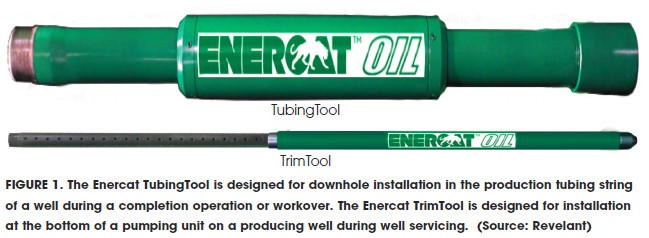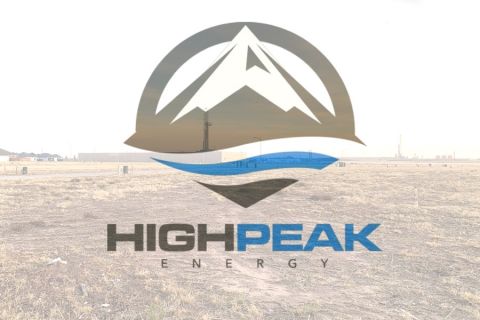
LWT data can be analyzed to take the guesswork out of stage length and perforation cluster placement decisions to improve the effectiveness of hydraulic fracture operations. (Source: GR Energy Services and Cordax Evaluation Technologies Inc.)
Affordable and fast openhole-quality logging data can be acquired by logging while tripping (LWT) pipe to enhance hydraulic fracturing operations through engineered completion designs. With costefficient LWT resistivity, density, neutron and spectral gamma ray logs, perforating and fracturing programs might be designed based on formation properties to optimize cluster placement and stage spacing. The acquisition of memory logs through LWT collars during normal trip-out eliminates the need for vertical pilot holes to evaluate pay zones and allows the completion to be optimized for toe-to-heel heterogeneity.
LWT operations
With more than 650 successful runs worldwide, LWT is a proven formation evaluation technique that allows wireline-quality openhole logs to be acquired immediately after drilling has been completed while the drilling assembly is tripped to surface. LWT measurements are obtained with standard openhole API-calibrated logging devices and meet all requirements for porosity and resistivity measurements. The battery-operated memory-based tools are lightweight with a small outer diameter, allowing simple deployment within specialized LWT drill collars.
The LWT collar, which is inserted into the drillstring on the last bit trip or on the planned reamer run, does not require any change in drilling plans or extra rig time to change to a specialized bottomhole assembly (BHA). LWT tools are deployed (pumped down) at the well total depth (TD) stage and log untethered during the normal pipe trip-out. Virtually no additional rig time is needed.
During the operation the logging tools reside at all times inside the drillpipe and can be fished, eliminating the risk of damaging or losing the tools and radioactive sources in the hole. While deploying the tools and measuring, the operator has full well control.
Unlike MWD and LWD tools, LWT tools are not a permanent part of the BHA but instead are deployed and retrieved from the drillstring only when log data are required. Operators get the benefit of significant cost savings in openhole data acquisition because
- There is virtually no additional rig time to acquire logs;
- Lost-in-hole charges are 10 times to 30 times lower than wireline or LWD; and
- There is no risk of tool sticking.
The LWT collars are positioned as close to TD as possible. After reaching TD with the LWT collars in the BHA, the tools are deployed in the drillpipe and pumped down. Once landed, the rig pumps a mud pill, if required, and trips out at logging speed. The rig can circulate, rotate or reciprocate pipe with the tools landed in the collar. LWT tools have achieved greater than 98.5% uptime to date, and no tools have been lost in hole.

Applications
Reduction of risk, rig time savings, depth and well-towell correlation, and acquisition of formation evaluation data in poor hole conditions are potential benefits in any onshore or offshore well. In unconventional wells, the primary application is enhancing production through engineered completion designs. The traditional approach to perforating placement in horizontal wells with geometrically spaced perforating clusters and stages does not take into account toe-to-heel heterogeneity and often results in a number of perforation clusters that do not contribute to well performance. Production logging data have shown that as much as 40% of perforations might not adequately accept treating fluid, resulting in nonoptimized stimulation of the targeted reservoir.
LWT data are used to optimize completions by precisely positioning stages and perforation clusters along the wellbore that target rock with similar geomechanical and producibility properties. A proprietary ZoneGrader program integrates and analyzes LWT formation evaluation and drilling data (weight on bit, rpm, ROP, torque, MWD/gamma ray and mud logging data). This unique answer product grades the formation along the wellbore based on geomechanical and producibility formation characteristics. Geomechanical rock properties include stress, brittleness and lithology. Producibility properties include lithology, total organic carbon, porosity, permeability and saturation. With the wellbore graded by geomechanical and producibility properties, the number and position of stages can be determined and perforation clusters precisely placed.
After selecting the ideal stage spacing and perforation cluster placement, the shaped charge and gun system design can be optimized to ensure higher payback hydraulic fracturing operations. By using the advanced shaped charge designs and perforating rock with similar properties within the stage, more even proppant distribution can be achieved across all perforation clusters, which leads to enhanced production. In addition, formation breakdown can be improved and the chance of screenout decreased by placing perforations in consistent rock.
The benefits of an engineered completion design based on LWT data can be validated after flowback by deploying a special cable into the well with fiber-optic monitoring sensors. This approach is being used to record distributed temperature (DTS) and acoustic (DAS) surveys to detect and monitor the contribution of each perforation cluster. Unlike traditional production logs, the entire wellbore can be simultaneously surveyed in real time, and the results of the DTS and DAS profiles are used to optimize future stimulation programs and to consider the potential benefits of refracturing programs.
Recommended Reading
BP’s Kate Thomson Promoted to CFO, Joins Board
2024-02-05 - Before becoming BP’s interim CFO in September 2023, Kate Thomson served as senior vice president of finance for production and operations.
Magnolia Oil & Gas Hikes Quarterly Cash Dividend by 13%
2024-02-05 - Magnolia’s dividend will rise 13% to $0.13 per share, the company said.
TPG Adds Lebovitz as Head of Infrastructure for Climate Investing Platform
2024-02-07 - TPG Rise Climate was launched in 2021 to make investments across asset classes in climate solutions globally.
HighPeak Energy Authorizes First Share Buyback Since Founding
2024-02-06 - Along with a $75 million share repurchase program, Midland Basin operator HighPeak Energy’s board also increased its quarterly dividend.
Occidental Increases Annual Dividend by 22%
2024-02-11 - Occidental Petroleum Corp.’s newly declared dividend is at an annual rate of $0.88 per share, compared to the previous annual rate of $0.72 per share.





